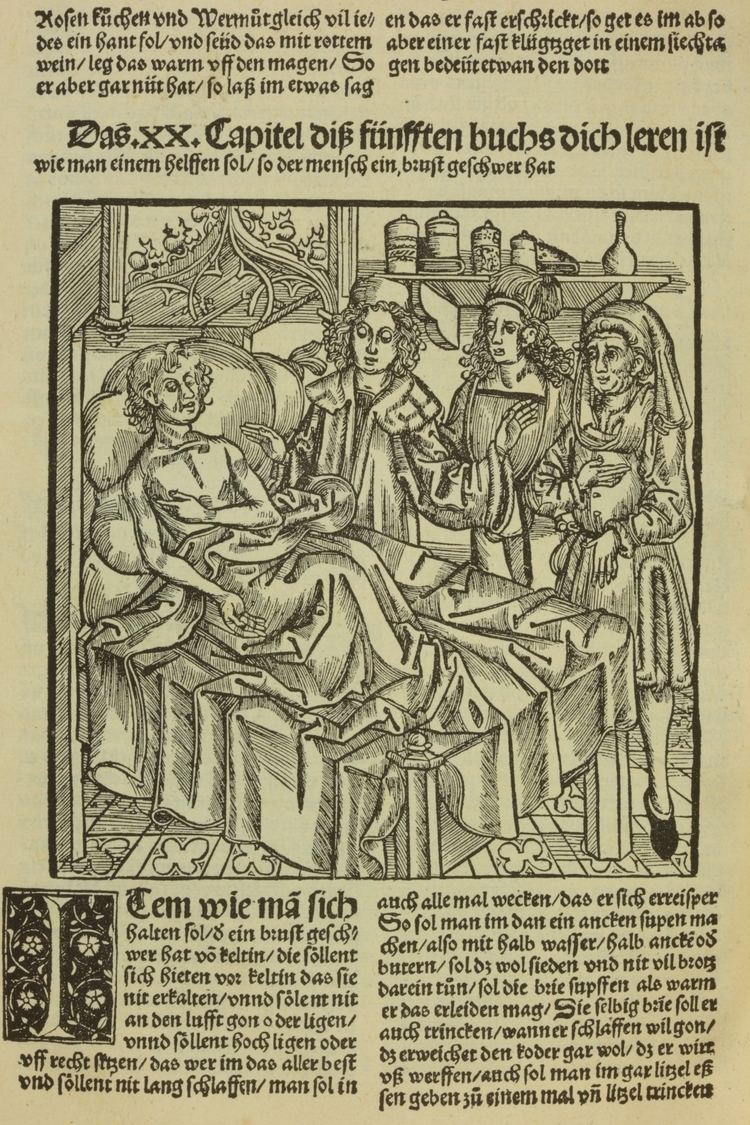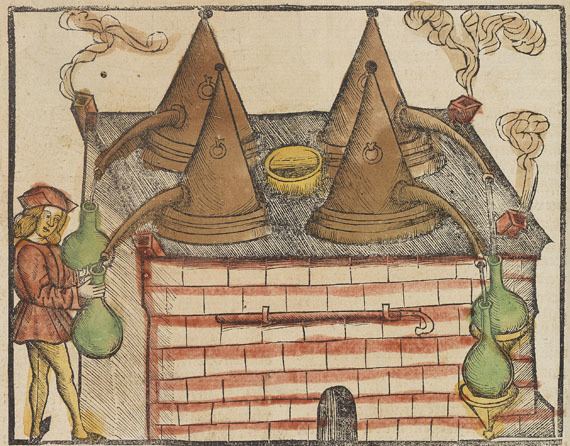Nationality German | Name Hieronymus Brunschwig | |
 | ||
Known for Liber de arte distillandi de simplicibus Books Book of Distillation | ||
Hieronymus Brunschwig - Wikipedia Article Audio
Hieronymus Brunschwig or Hieronymus Brunschwygk (c. 1450 – c. 1512), was a German surgeon („wund artzot“), alchemist and botanist. He was notable for his methods of treatment of gunshot wounds and for his early work on distillation techniques. His most influential book was the Liber de arte distillandi de simplicibus (also called Kleines Destillierbuch).
Contents
- Hieronymus Brunschwig Wikipedia Article Audio
- Life
- Publications
- Liber de arte distillandi de simplicibus
- References

Life

Brunschwig was born c. 1450 in the free imperial city of Strasbourg, which in his time was part of the Holy Roman Empire. Some notes in his Buch der cirurgia may suggest, that he studied in Bologna, Padua and Paris and that he participated in the Burgundian Wars, but all this is utterly unfounded. He settled at Strasbourg at the end of the fifteenth century. He died in Strasbourg, c. 1512.
Publications
Liber de arte distillandi de simplicibus
The Liber de arte distillandi de simplicibus (1500) was the earliest printed book dealing with the techniques of distillation from herbal and animal substances. It consisted of three parts:
- A detailed description of the methods and apparati, showing influences from Jean de Roquetaillades‘ book De consideratione quintae essentiae. The name of distillation was given by the alchemists not only to the procedure that is nowadays called distillation, but as well to methods like „filtration“ and „circulation“ that were interpreted as methods of „de-stillatio (dropping down)“.
- An enumeration of herbal and animal substances in alphabetical order with botanical remarks on indigenous plants, based on Brunschwigs‘ own observations. This was followed by the enumeration of indications of the „distilled” medicines. These indications were based as well on the writings in the textbooks of old tradition (Dioscorides …) as on prescriptions of folk medicine. The „Büchlein von den ausgebrannten Wässern“, ascribed to Michael Puff of Vienna and recipes in manuscripts of the 15th century were Brunschwigs‘ main sources.
- A list of maladies „from head to feet“, with reference to the prescriptions given in the second part.
As the last of the fifteenth-century herbals, the Liber de arte distillandi de simplicibus is widely regarded to be an important link between the Middle Ages and modern times. Due to its in-depth description and many illustrations of distillation apparati and techniques, the book was considered to be an authoritative text well into the 16th century.
Otto Brunfels and Hieronymus Bock, both called „fathers of botany“ („Väter der Botanik“) in honour of their truthful description of indigenous plants, respected Brunschwig as their predecessor. Leonhard Fuchs, the third of the „fathers of botany“, did not mention Brunschwig at all.
